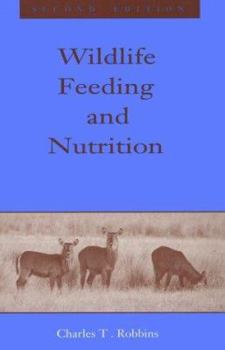Wildlife Feeding and Nutrition
Select Format
Select Condition 
Book Overview
Research of the past ten years has made it increasingly clear that domestic animals and wild animals differ in their nutritional requirements. Nutritional management, beneficial to domestic animals, may actually be life-threatening to wild ones. This new edition of Wildlife Feeding and Nutrition has been thoroughly updated to reflect recent insights, especially with regard to wildlife nutrition essential to successful management either in the wild or in captivity. Zoological garden and laboratory personnel, wildlife biologists, ecologists, animal nutritionists, and veterinarians will benefit from this new edition.
Format:Paperback
Language:English
ISBN:0125893833
ISBN13:9780125893831
Release Date:May 1994
Publisher:Academic Press
Length:368 Pages
Weight:0.20 lbs.
Dimensions:0.9" x 5.9" x 9.2"
Customer Reviews
1 rating
An excellent reference
Published by Thriftbooks.com User , 25 years ago
Robbins' "Wildlife Feeding and Nutrition" is an excellent synthesis of ecological physiology as typically practiced by wildlife management professionals. As suggested by the title, the emphasis is on forage, nutrient requirements, energy demands, and production.Robbins tackles the subject from a physiological, rather than strictly ecological, standpoint. Not surprisingly, ungulates (both wild and domestic) provide most of the resources, although Robbins takes pains to make his discussions as general as possible."Wildlife Feeding and Nutrition" is positively packed with literature, charts, figures, tables, and even a few photographs.This is not a how-to manual for veterinarians and zookeepers, but instead a synthesis of physiological concepts.All together, a well-written reference. I'm looking forward to the third edition -William Adair, Department of Fisheries and Wildlife, Utah State University






